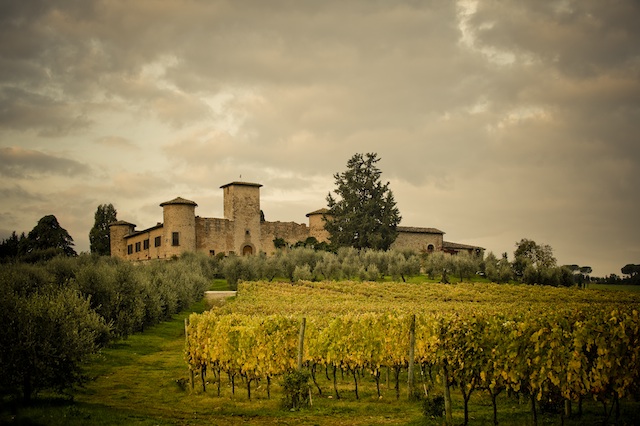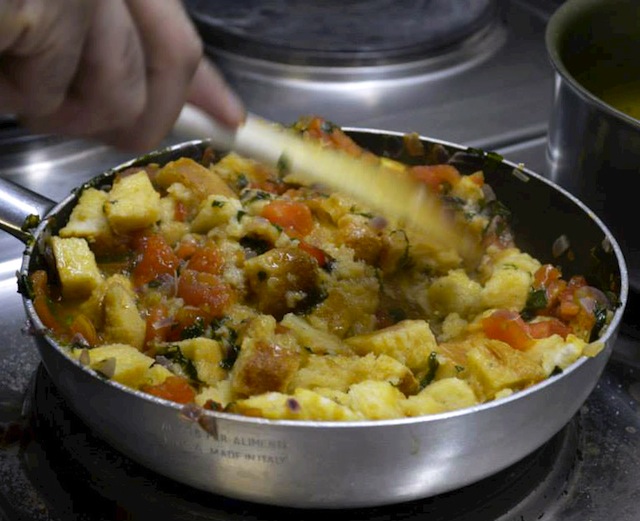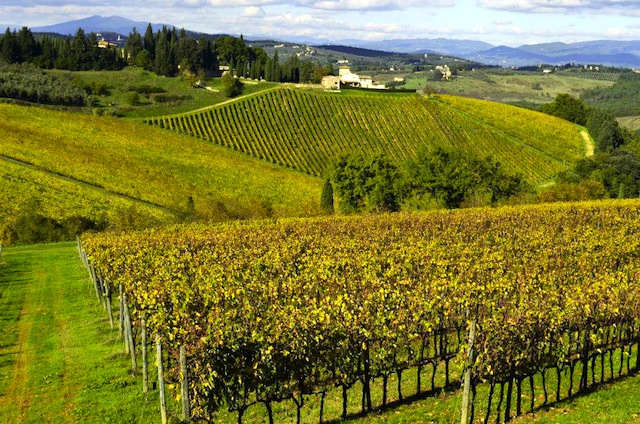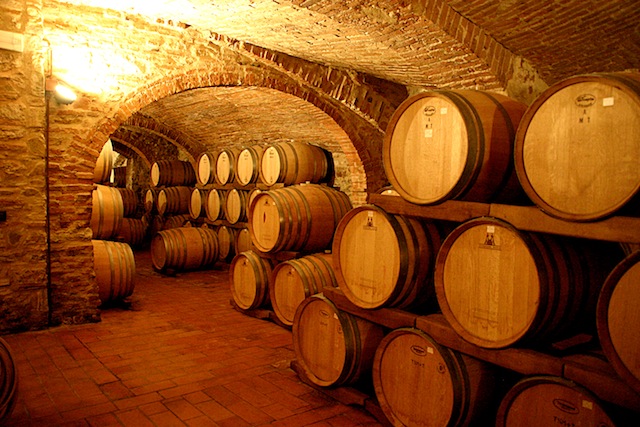
A Way of Life. This is the tagline of Tuscany’s Castello de Gabbiano, and one that couldn’t be more fitting.
Rolling hills littered with olive trees, Cypress forests hiding valuable white truffle, Tuscan stone villas holding interesting agricultural histories, colorful crop plots and winding roads lined with rows upon rows of vineyards. This is the view I enjoy right from my castle window in Tuscany.
A Trip Back In History
Castello de Gabbiano isn’t a place you go for a quick stopover, it’s a place you go to experience. The hotel resides in a 12th-century castle once owned by prominent Florentine families. In the 14th century Gabbiano became a farming enterprise, beginning to produce wine, as well. While the entire property takes you back in time — with features like stone walls, medieval accents, round corner towers and meutrieres — the most notable feature is undoubtedly the square tower. Its work began in the 11th century to be used as a fortress to defend an important communication route during a time when Florence and Siena were constantly fighting.
A great time to visit is fall — specifically September and October — when wine grapes are being harvested and wine and culture festivals abound. You’ll also be able to dine at Castello de Gabbiano’s onsite restaurant, Il Cavaliere. A brick farmhouse from the 1700s, in the restaurant you’ll enjoy heritage and natural beauty with old stone walls, arched doorways, exposed wooden beams and floor-to-ceiling windows providing scenic views of the Tuscan countryside.

Learning the art of traditional Tuscan cooking
Traditional Tuscan Cooking
While you can order seasonal Tuscan dishes off the menu, a more experiential option is taking a traditional cooking class. Executive Chef Paolo Nucera and Sous Chef Erez Chayon lead the experience, which focuses on the use of olive oil in both savory and sweet Tuscan dishes. The menu consists of a fresh artichoke salad dressed in new olive oil and local Pecorino cheese; chic pea soup containing handmade cavatelli pasta; a spicy yet earthy “Pollo Al Mattone” chicken dish; and a fluffy olive oil cake. Not only do I learn some new recipes to try at home, but the use of simple, fresh and local ingredients that naturally bring out a dish’s flavor becomes very apparent, especially when the 4-course meal is paired with Gabbiano wines.

Chianti Classico vineyards
Experiencing The Chianti Classico Region
Castello di Gabbiano is located in the heart of the famous Chianti Classico Region — one of Italy’s most important wine areas — encompassing about 7,000 hectares (17,297 acres) between Florence and Siena. With altitudes varying from 150 to 500 meters (492 to 1640 feet), you’ll find two main terroirs. While the sandy terrestrial soils at the lower altitudes lead to fuller, dried and more tannic wines, the higher altitudes with their limestone and galestro rock offer something more delicate and lighter. The region is also know for its prevalence of bittersweet Sangiovese grapes, with flavors of cherry, vanilla and tea.
Encompassing 139 hectares (343 acres), Castello di Gabbiano is split between two hills allowing for a wide variety of grape characteristics and wine styles. In terms of what’s planted, you’ll find 80% Sangiovese, 14% Merlot, 5% experimental vines, and 1% San Colombano and Malvasia. There’s also a Educational Vineyard so guests and visitors can learn more about the different varietals.

Wine cellar at Castello di Gabbiano. Photo courtesy of Castello di Gabbiano.
Wine Tasting
While a vineyard tour allows me to get an overview of the vines and grape-picking process, a wine tasting takes me into the old castle cellar where the wine casks are now aged. Instead of a standard tasting, I opt for a barrel tasting to sample the wines straight from the barrel.
“Each hectare of vineyard is considered a block,” explains Federico, the property’s winemaker. “Each has its own microclimate, sun exposure, soil and altitude, with the smallest differences making a big difference.”
I can taste how these influences affect the wine, even before it’s ready to be bottled. We sample three wines straight from the barrel, the liquid syphoned out using a tube and bucket. The first is a Cabernet from the Spina Block (each block of the vineyard has a name), aged in French Oak and featuring a heavy perfume and tannins. Next is a Cabernet from the Leccione Block, which has a much smoother texture and deeper concentration despite being the same grape from the same property.
“Usually Spina is better, but this year Leccione had better sun exposure,” explains Federico. “Things can change very quickly in winemaking.”
That’s the point of tasting wine from the barrel. There are many factors that can change the aromas and flavors of wine grapes at any moment, and these samplings allow you to check the direction in which the wine is heading.
Lastly, I try a Merlot from the Provinciale Block, which is astringent and almost effervescent. While taste-wise all three were overly tart from the grape skins as the wine isn’t ready, it’s an interesting educational experience, with related offerings of the Castello de Gabbiano being vertical wine tastings, blind wine tastings, food and wine pairings, and olive harvesting and pressing.
Reflections
That night, I take a glass of 2009 Bellezza — a red wine made with 100% Sangiovese that’s aged for 14 to 16 months in French Oak — out by the pool. I swirl the wine in my glass, inhaling aromas of stewed fruit and savoring the flavors of sour cherry, chocolate and coffee. I stare up at the stars, making out O’Ryan’s Belt and Gemini in the clear country sky. Looking up, tastes of cocoa, caffeine and fruit coating my insides, I think I can see heaven. And even if I can’t, I know I have experienced Earth’s version of it at Castello de Gabbiano. As their tagline states, it’s a way of life; where time slows down, the land is appreciated, and health and happiness are what matters most.

Jessica Festa is the editor of the travel sites Jessie on a Journey (http://jessieonajourney.com) and Epicure & Culture (http://epicureandculture.com). Along with blogging at We Blog The World, her byline has appeared in publications like Huffington Post, Gadling, Fodor’s, Travel + Escape, Matador, Viator, The Culture-Ist and many others. After getting her BA/MA in Communication from the State University of New York at Albany, she realized she wasn’t really to stop backpacking and made travel her full time job. Some of her most memorable experiences include studying abroad in Sydney, teaching English in Thailand, doing orphanage work in Ghana, hiking her way through South America and traveling solo through Europe. She has a passion for backpacking, adventure, hiking, wine and getting off the beaten path.








